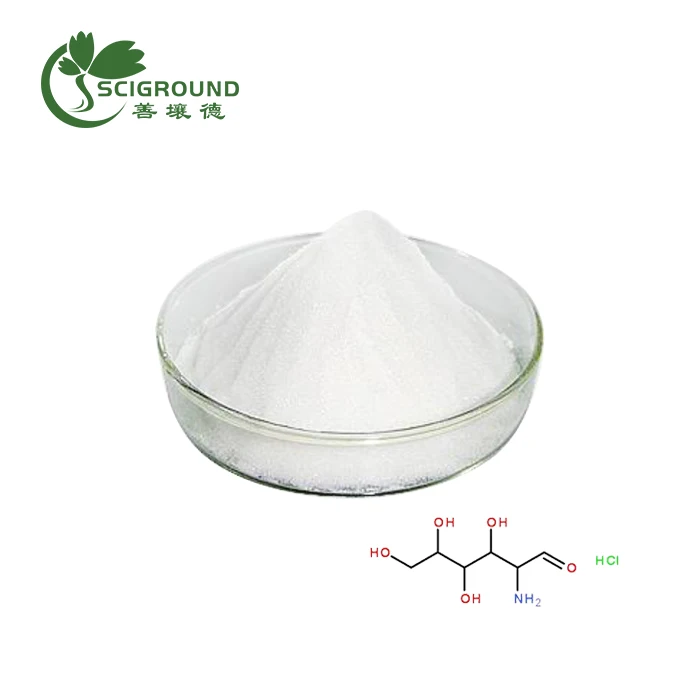Is cardamom the same as Amomum?
When delving into the world of aromatic spices, it's easy to get confused by the various names and varieties. One common question that arises is whether cardamom and Amomum are the same. While they are closely related, there are some key differences to understand. Let's explore the fascinating world of these fragrant spices and uncover their unique characteristics.
Cardamom and Amomum both belong to the Zingiberaceae family, which also includes ginger. However, they are distinct genera within this family. The term "cardamom" typically refers to Elettaria cardamomum, also known as green cardamom or true cardamom. On the other hand, Amomum is a separate genus that includes species like Amomum subulatum, commonly known as black cardamom.
While green cardamom (Elettaria) is often the go-to spice in many culinary applications, Amomum species offer their own unique flavors and benefits. Let's dive deeper into the world of Amomum and discover its uses, taste profile, and potential health benefits.
What is Amomum aromaticum used for?
Amomum aromaticum, also known as Bengal cardamom, is a versatile spice with a rich history of culinary and medicinal uses. This aromatic plant has been valued for centuries in various Asian countries, particularly in Vietnam and India. Let's explore some of the primary uses of Amomum aromaticum:
Culinary Applications: Amomum aromaticum is widely used as a spice and food flavoring agent in Vietnamese and other Asian cuisines. Its unique aroma and flavor profile add depth to various dishes, including savory meals, desserts, and beverages.
Traditional Medicine: In traditional medicine systems, the fruits of Amomum aromaticum have been employed to address a range of health concerns. Some of the conditions it has been used to treat include:
- Cough
- Abdominal pain
- Vomiting
- Diarrhea
- Malaria
Digestive Health: The seeds of Amomum aromaticum have been utilized in India to support digestive health. They are believed to aid in digestion and alleviate various gastrointestinal discomforts.
Eye Care: Interestingly, the oils extracted from Amomum aromaticum seeds have been applied to the eyelids in some traditional practices. This application is thought to help reduce inflammation and promote eye health.
Antimicrobial Properties: Recent scientific studies have shed light on the potential antimicrobial activities of Amomum aromaticum. Research has shown that methanolic extracts of this plant exhibit significant antimicrobial effects against various bacteria, including:
- Enterococcus faecalis
- Staphylococcus aureus
- Enterobacter aerogenes
- Proteus mirabilis
- Pseudomonas aeruginosa
These findings suggest that Amomum aromaticum may have potential applications in fighting certain bacterial infections.
Antileishmanial Potential: In a recent screening program of 37 plants from the Vietnamese flora, essential oils derived from Amomum aromaticum showed promising antileishmanial properties. This discovery opens up new avenues for research into potential treatments for leishmaniasis, a parasitic disease transmitted by sandflies.
As research on Amomum aromaticum continues to evolve, we may uncover even more exciting applications for this aromatic plant in both culinary and medicinal fields.
What does Amomum taste like?
The taste of Amomum can vary depending on the specific species, but let's focus on one of the most well-known varieties: Amomum subulatum, commonly known as black cardamom. This spice offers a unique flavor profile that sets it apart from its green cardamom cousin.
Smoky Undertones: One of the most distinctive characteristics of black cardamom is its smoky flavor. This smoky quality is derived from the traditional drying method, where the pods are dried over open fires. The result is a complex taste that adds depth and warmth to dishes.
Camphor-like Notes: Black cardamom possesses a strong, camphor-like flavor that is both bold and aromatic. This intense taste can be described as slightly mentholated, adding a cooling sensation to the palate.
Earthy and Robust: Unlike the bright, citrusy notes of green cardamom, black cardamom has a more robust and earthy flavor profile. It brings a grounding element to dishes, making it particularly suitable for hearty stews, meat dishes, and spice blends.
Subtle Sweetness: While not as prominently sweet as green cardamom, black cardamom does have underlying sweet notes that balance out its strong, savory characteristics.
Pungent Aroma: The aroma of black cardamom is equally as impressive as its taste. When crushed or heated, it releases a pungent, slightly musky scent that can add complexity to both sweet and savory recipes.
Versatile Flavor: Despite its strong taste, black cardamom is surprisingly versatile. It can be used in small quantities to add depth to spice blends, marinades, and even some desserts. Its unique flavor profile makes it a favorite in many North Indian, Nepalese, and Middle Eastern cuisines.
Cooling Effect: Interestingly, while black cardamom has a warm, smoky taste, it's believed to have a cooling effect on the body according to traditional medicine systems. This dual nature makes it a fascinating spice to explore in various culinary applications.
The taste of Amomum, particularly black cardamom, is a journey of complex flavors that can transform ordinary dishes into extraordinary culinary experiences. Its unique profile makes it an exciting spice for chefs and home cooks alike to experiment with and incorporate into their cooking repertoire.
What is the benefit of Amomum?
Amomum, a genus of plants belonging to the Zingiberaceae family, has been valued for centuries in traditional medicine systems across Asia. Its widespread use in countries like China, India, Malaysia, and Vietnam is testament to its potential health benefits. Let's explore some of the key advantages associated with Amomum:
Digestive Health Support: One of the most well-known benefits of Amomum is its positive impact on digestive health. Various species within this genus have been traditionally used to:
- Alleviate stomach discomfort
- Reduce bloating and gas
- Improve overall digestion
- Stimulate appetite
The carminative properties of Amomum make it a popular remedy for digestive issues in many traditional medicine systems.
Anti-inflammatory Properties: Several studies have suggested that certain Amomum species possess anti-inflammatory properties. This could potentially help in managing conditions associated with inflammation, though more research is needed to fully understand these effects.
Antioxidant Activity: Amomum extracts have been found to contain compounds with antioxidant properties. These antioxidants may help protect cells from damage caused by free radicals, potentially contributing to overall health and wellbeing.
Antimicrobial Effects: As mentioned earlier, some Amomum species have demonstrated antimicrobial activities against various pathogens. This property could have implications for natural preservation methods and potential development of new antimicrobial agents.
Respiratory Health: In traditional medicine, certain Amomum species have been used to support respiratory health. They may help in:
- Alleviating coughs
- Reducing congestion
- Soothing sore throats
Potential Anti-cancer Properties: While research is still in early stages, some studies have suggested that certain compounds found in Amomum species may have anti-cancer potential. However, much more research is needed to confirm these effects and understand their mechanisms.
Liver Health: In traditional Chinese medicine, some Amomum species have been used to support liver health. They are believed to have hepatoprotective properties, potentially helping to protect the liver from damage.
Mood Enhancement: Some traditional uses of Amomum include mood enhancement and stress reduction. While these effects need more scientific validation, the aromatic properties of Amomum species may contribute to their potential mood-boosting effects.
Cardiovascular Health: Preliminary research has suggested that certain Amomum species may have beneficial effects on cardiovascular health, such as helping to regulate blood pressure and improve circulation. However, more studies are needed to confirm these effects.
Dental Health: Some Amomum species have been traditionally used to promote oral hygiene and freshen breath. The antimicrobial properties of these plants may contribute to their potential benefits for dental health.
It's important to note that while Amomum has a long history of use in traditional medicine and shows promising potential in various areas of health, many of these benefits require further scientific research to be fully validated. As with any herbal remedy, it's crucial to consult with a healthcare professional before using Amomum for medicinal purposes, especially if you have any existing health conditions or are taking medications.
The diverse potential benefits of Amomum make it an intriguing subject for both traditional medicine practitioners and modern researchers alike. As our understanding of this fascinating genus grows, we may uncover even more ways in which Amomum can contribute to human health and wellbeing.
In conclusion, while cardamom and Amomum are closely related, they offer distinct flavors and potential benefits. Amomum, with its unique taste profile and various traditional uses, continues to be a subject of interest in both culinary and medicinal fields. As research progresses, we may uncover even more exciting applications for this aromatic plant genus.
If you're interested in exploring the potential of Amomum Extract or other plant-based products, Shaanxi SCIGROUND is here to help. As a professional Plant Extract Powder manufacturer and supplier, we offer high-quality products with complete certificates, OEM support, and fast delivery. For more information, please contact us at info@scigroundbio.com.
References:
- Ravindran, P. N., & Madhusoodanan, K. J. (Eds.). (2002). Cardamom: The genus Elettaria. CRC Press.
- Lim, T. K. (2016). Edible Medicinal and Non-Medicinal Plants: Volume 12, Modified Stems, Roots, Bulbs. Springer.
- Khare, C. P. (2007). Indian Medicinal Plants: An Illustrated Dictionary. Springer Science & Business Media.
- Kumar, S., Kumari, R., & Mishra, S. (2019). Pharmacological properties and their medicinal uses of Cinnamomum: A review. Journal of Pharmacy and Pharmacology, 71(12), 1735-1761.
- Aggarwal, B. B., & Kunnumakkara, A. B. (Eds.). (2009). Molecular Targets and Therapeutic Uses of Spices: Modern Uses for Ancient Medicine. World Scientific.
- Srivastava, N., Sharma, V., Kamal, B., Dobriyal, A. K., & Jadon, V. S. (2016). Advancement in research on Amomum subulatum Roxb: A review. Journal of Applied Research on Medicinal and Aromatic Plants, 3(4), 179-186.
Related Industry Knowledge
- What is the difference between Acorus gramineus and Acorus calamus?
- What is clove powder used for?
- Are Persimmons Good for You?
- L Valine Benefits
- All You Need to Know About Pure Capsaicin Powder
- Exploring the Wonders of Alfalfa Extract Powder: A Comprehensive Overview
- Lentinan Extract: A Powerful Mushroom-Based Supplement
- Forsythia Extract: Unveiling the Natural Power of Traditional Medicine
- What is BCAA in Protein Powder?
- What is the best capsaicin supplement for weight loss







